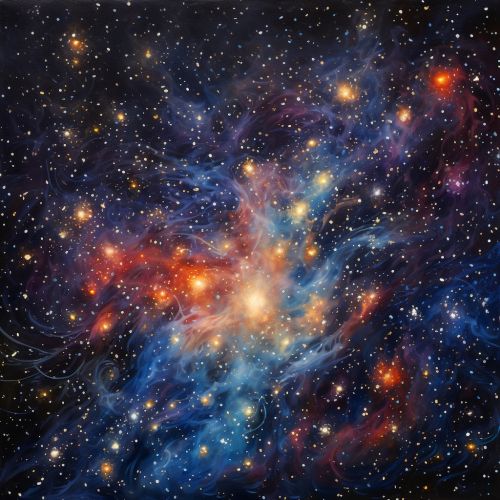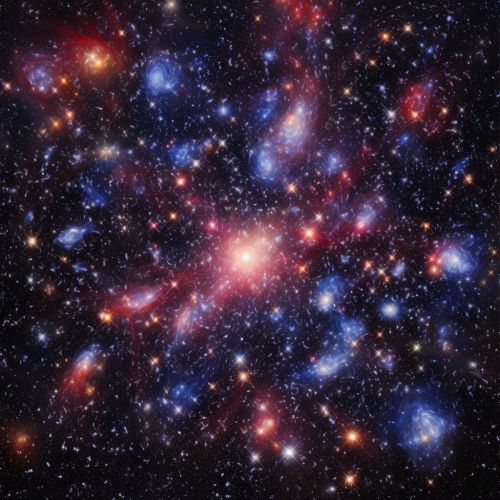Bautz-Morgan classification
Overview
The Bautz-Morgan classification is a system used to categorize galaxy clusters based on their overall appearance and the concentration of their galaxies. This classification system was developed by astronomers Laura Bautz and William Wilson Morgan in the late 20th century. The system is primarily used in the field of astrophysics and cosmology, providing a basis for understanding the structure and evolution of galaxy clusters.


Classification System
The Bautz-Morgan classification divides galaxy clusters into three types: Type I, Type II, and Type III. These types are determined by the concentration of galaxies within the cluster and the brightness of the central galaxy.
Type I
Type I clusters, also known as cD clusters, are characterized by a very bright, giant elliptical galaxy at their center. This central galaxy is often referred to as a cD galaxy, named for the classification system developed by astronomers Allan Sandage and Mary Crisp in the 1970s. The central galaxy in a Type I cluster is typically surrounded by a halo of stars and gas that extends well beyond the galaxy's core. This extended halo is thought to be the result of the central galaxy consuming smaller galaxies within the cluster, a process known as galactic cannibalism.


Type II
Type II clusters are characterized by a number of bright galaxies in their center, but no single dominant galaxy. The central galaxies in a Type II cluster are typically of similar brightness, and the overall distribution of galaxies within the cluster is less concentrated than in a Type I cluster. This type of cluster is thought to be less evolved than a Type I cluster, with the central galaxies yet to merge into a single dominant galaxy.


Type III
Type III clusters are the least concentrated of the three types, with no dominant central galaxy and a relatively uniform distribution of galaxies throughout the cluster. These clusters are thought to be the least evolved of the three types, with the galaxies within the cluster yet to undergo significant merging or cannibalism.


Application and Limitations
The Bautz-Morgan classification is widely used in astrophysics and cosmology to study the structure and evolution of galaxy clusters. However, like any classification system, it has its limitations. The system is based on the visual appearance of galaxy clusters, which can be influenced by a variety of factors, including the distance of the cluster, the viewing angle, and the sensitivity of the observing telescope. Furthermore, the system does not account for the dynamic processes occurring within galaxy clusters, such as galaxy mergers and interactions, which can significantly alter the structure and appearance of a cluster over time.
Despite these limitations, the Bautz-Morgan classification provides a useful framework for studying galaxy clusters and has contributed significantly to our understanding of these fascinating cosmic structures.
See Also
References
1. Bautz, L. & Morgan, W. W. (1970). "A New Empirical Classification System for Clusters of Galaxies". Astrophysical Journal, 162, L149. [1] 2. Sandage, A. & Crisp, M. (1977). "The Classification of Galaxies: Early History and Ongoing Developments". Annual Review of Astronomy and Astrophysics, 15, 357-389. [2]
